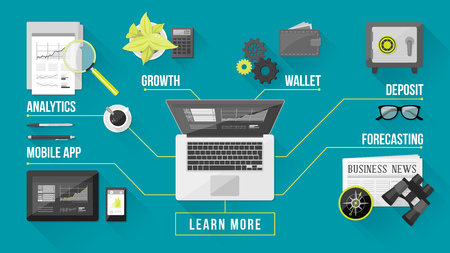Understanding Cold Job Inquiry Emails in the U.S. Context
When youre searching for a job in the United States, sending a cold job inquiry email can be a powerful way to connect with potential employers—even if they havent posted any open positions. But before you start writing, its important to understand what a cold job inquiry email is and why it matters, especially within American workplace culture.
What Is a Cold Job Inquiry Email?
A cold job inquiry email is a message you send directly to a company or hiring manager without responding to an advertised job opening. Instead of waiting for a position to be posted, you take the initiative to introduce yourself and express your interest in working with the company. This approach shows proactiveness and genuine interest, which are highly valued traits in American workplaces.
Why Cold Job Inquiry Emails Matter
Many jobs in the U.S. are filled through networking or referrals before theyre ever advertised publicly. By reaching out first, you might get noticed early or even learn about opportunities that arent widely shared. Cold emails demonstrate confidence and self-motivation—two qualities American employers often look for in candidates.
Key Cultural Expectations When Approaching American Employers
Understanding cultural expectations can make your email stand out for all the right reasons. Here are some important points to keep in mind:
| Cultural Expectation | Description |
|---|---|
| Directness | Americans appreciate clear and concise communication. Get to the point quickly without unnecessary details. |
| Professionalism | Your tone should be polite but confident. Address people formally unless invited otherwise. |
| Personalization | Show youve researched the company or person. Mention something specific about their work or values. |
| Value Proposition | Briefly explain how your skills can help the company achieve its goals. |
| Follow-Up | Its common (and acceptable) to send one polite follow-up if you dont hear back after a week or two. |
Quick Tips for Success
- Use a professional email address ([email protected]).
- Keep your message brief—ideally less than 200 words.
- Avoid slang or overly casual language.
- Proofread carefully before sending.
Remember:
Your first impression counts! A well-crafted cold job inquiry email can open doors that online applications cant.
2. Researching the Company and Contact Person
Before you send a cold job inquiry email to an American company, it’s important to do your homework. A little research goes a long way in making your message stand out. Here’s how you can effectively research U.S. companies, find the right person to contact, and personalize your outreach for a bigger impact.
Why Research Matters
American employers receive many emails every day. Showing that you understand their business and have put thought into your message can set you apart from the crowd. Personalization is key in the U.S. job market.
Step-by-Step Guide to Researching Companies
| Step | Action | Tips |
|---|---|---|
| 1. Visit the Company Website | Read the “About Us” page, mission statement, and recent news. | Look for company values and culture cues. |
| 2. Use LinkedIn | Search for the company page and employees. | Check for updates, employee posts, and job openings. |
| 3. Review Industry News | Look for articles or press releases about the company. | Mention recent achievements in your email if relevant. |
| 4. Explore Social Media | Check Twitter, Facebook, and Instagram accounts. | Notice tone of voice and current campaigns or events. |
| 5. Check Glassdoor or Indeed | Read reviews from employees about workplace culture. | This helps tailor your message to fit their environment. |
Identifying the Right Contact Person
The best cold job inquiry emails are addressed to a specific person instead of “To Whom It May Concern.” Here’s how you can find the right contact:
Who Should You Reach Out To?
- Hiring Manager: Usually found in the department you’re interested in (e.g., Marketing Manager).
- HR Recruiter: Look for titles like “Talent Acquisition Specialist” or “Recruiter.”
- Your Potential Supervisor: If you know which team fits your skills, reach out to its leader.
How to Find Their Contact Information
- LinkedIn: Use filters to find people by job title at the company.
- Company Website: Sometimes lists key staff or has a team directory.
- Email Guessing Tools: Tools like Hunter.io can help you guess professional email addresses based on standard formats (e.g., [email protected]).
- Networking Events or Webinars: If they speak at an event, their contact info might be available there.
Tactics for Personalizing Your Outreach
A personalized message shows effort and increases your chances of getting noticed. Here’s how to add a personal touch:
- Mention a recent project, product launch, or news item related to the company.
- If you share a connection or attended the same school as someone at the company, include it briefly.
- Tie your skills directly to something specific you learned during your research (“I noticed your team is expanding into digital marketing; my background in SEO could help support this growth”).
- Avoid generic phrases like “I admire your company”—be specific about what excites you!
![]()
3. Structuring Your Cold Job Inquiry Email
When reaching out to an American company with a cold job inquiry email, the structure and formatting of your message can make a huge difference. Here’s how you can craft an email that gets noticed and makes a professional impression.
Best Practices for Formatting Your Email
Formatting matters just as much as content. Keep your email short, clear, and organized. Use simple language and always proofread for typos or grammar mistakes. Here are some key areas to focus on:
| Section | Tips | Example |
|---|---|---|
| Subject Line | Be direct, specific, and professional. Mention your intent or the position if possible. | Interest in Marketing Analyst Role – John Smith |
| Greeting | Address the recipient by name if possible. If not, use a general but respectful greeting. | Hi Ms. Johnson, Dear Hiring Manager, |
| Email Body | Start with a brief introduction, state your purpose, highlight relevant skills or experience, and keep paragraphs short. | I’m reaching out to express my interest in opportunities at XYZ Corp. With three years of digital marketing experience… |
| Call to Action | Clearly state what you hope happens next—request a meeting, phone call, or information on open roles. | I’d appreciate the chance to discuss how I can contribute to your team. Are you available for a quick call next week? |
| Closing & Signature | Use a polite closing and include full contact info. | Best regards, John Smith (555) 123-4567 [email protected] |
Crafting a Compelling Subject Line
Your subject line is the first thing someone sees. Make it count! Avoid generic phrases like “Job Inquiry” or “Looking for Work.” Instead, combine your intent with specifics about the role or department you’re interested in. For example:
- Seeking Opportunities in Graphic Design – Jane Doe
- Experienced Sales Manager Interested in ABC Corp.
- Chemical Engineering Graduate Inquiry – Mark Lee
Writing a Professional Greeting
If you know the hiring manager’s name, use it: “Hi Mr. Thompson,” or “Dear Ms. Williams,”. If not, stick with safe options like “Dear Hiring Team,” or “Hello [Company] Recruiting Team,”. Avoid overly casual greetings such as “Hey” or skipping the greeting altogether.
Keeping Your Email Body Concise and Relevant
The body should quickly explain who you are and why you’re writing. Highlight one or two key achievements or skills that relate to the company’s needs. Don’t include your entire resume—keep it focused and easy to scan. Aim for three short paragraphs or less.
Email Body Example:
My name is Alex Gomez, and I’m an IT professional with five years of experience supporting enterprise networks.
I’m very interested in joining [Company Name]’s IT team because of your innovative work in cloud technology.
If there are any current or future openings where my background could be helpful, I would love to connect.
A Clear Call to Action (CTA)
Your CTA tells the reader what you want them to do next. Be polite but confident—ask directly for what you need without being pushy. Typical CTAs include requesting an informational interview, asking about upcoming openings, or offering to provide more information.
- I would be grateful for any guidance you could offer regarding open roles at your company.
- I’d love to schedule a brief call to learn more about your team’s work and discuss how I can add value.
- Please let me know if there’s a convenient time for us to connect this week.
Email Formatting Checklist:
- Professional email address (avoid nicknames)
- No large blocks of text—use paragraphs and spacing
- Clear subject line and greeting
- Straightforward language; avoid jargon unless industry-specific
- Avoid attachments unless requested; link to online portfolio if needed
- Error-free spelling and grammar throughout
- Full contact information in signature block
This structure will help ensure your cold job inquiry stands out—in all the right ways—to American employers.
4. Writing With American Professionalism and Tone
Understanding the Right Language and Tone
When reaching out to American companies, its important to use a tone that is both professional and friendly. Americans appreciate clear, concise communication that feels approachable but also respectful. Avoid overly formal language that might come across as distant, but also steer clear of slang or casual phrases that could seem unprofessional.
Tips for Setting the Right Tone
| Do | Dont |
|---|---|
| Use polite greetings like “Hello” or “Hi” | Start with “Dear Sir/Madam” unless you dont know the recipients name |
| Address the recipient by their first name if appropriate | Use nicknames or abbreviations |
| Keep sentences short and clear | Use long, complex sentences |
| Express genuine interest in the company or role | Sound demanding or entitled |
| Thank them for their time and consideration | Forget to express appreciation |
Business Etiquette Unique to American Culture
Americans value directness, so get to your point quickly without unnecessary background. Be honest about your intentions—if you’re seeking advice, mentorship, or job opportunities, say so respectfully. Also, avoid making exaggerated claims about your skills; instead, back up your abilities with brief examples.
Example Phrases That Work Well:
- “I am very interested in learning more about opportunities at [Company Name].”
- “If possible, I would appreciate any advice you could offer regarding the application process.”
- “Thank you for considering my inquiry. I look forward to hearing from you.”
Formatting and Structure Matters Too
Your email should be easy to read. Use paragraphs to separate ideas, avoid large blocks of text, and always proofread for grammar and spelling. A well-structured email shows professionalism and attention to detail.
5. Follow-Up Strategies and Next Steps
Timing Your Follow-Up
After sending your initial cold job inquiry email, its important to give the recipient some time to read and consider your message. In American business culture, following up too soon can seem impatient, but waiting too long may cause your email to get lost in the shuffle. A good rule of thumb is to wait 5-7 business days before sending a polite follow-up email.
Recommended Follow-Up Timeline
| Action | Timeframe |
|---|---|
| Initial Cold Email Sent | Day 1 |
| First Follow-Up Email | Day 6-8 |
| Second (Final) Follow-Up (if needed) | Day 14-16 |
How to Write an Effective Follow-Up Email
Your follow-up message should be friendly, concise, and show appreciation for their time. Use clear subject lines like “Following Up on Previous Inquiry” or “Re: Interest in Opportunities at [Company Name].” Briefly reference your previous message and restate your enthusiasm for the company. Here’s a sample structure:
- Greeting: Address the recipient by name.
- Reference: Mention your previous email and the date it was sent.
- Value Statement: Reiterate what excites you about the company and how you can contribute.
- Polite Close: Thank them for their consideration and offer to provide more information if needed.
Building Rapport with U.S. Employers
Relationships are key in American workplace culture. Use your emails as opportunities to build rapport:
- Personalize Your Message: Refer to something specific about the company or recent news that caught your attention.
- Be Authentic: Show genuine interest without being overly formal or generic.
- Acknowledge Their Time: Express gratitude for any response, even if it’s not positive right away.
Phrases That Help Build Rapport
| Phrasing Example | Purpose |
|---|---|
| “I was inspired by your company’s recent initiative on…” | Makes your outreach personal and relevant. |
| “Thank you for taking the time to read my email.” | Shows respect for their busy schedule. |
| “I would love to hear about any future opportunities.” | Keeps the conversation open and positive. |
Maintaining Momentum After Your Follow-Up
If you don’t hear back after two polite follow-ups, it’s best to move on while keeping the door open for future contact. You can connect with the employer on LinkedIn with a brief note or engage with their public content. If you do receive a response, reply promptly, express gratitude, and continue building the relationship by sharing updates or asking thoughtful questions about their work environment or hiring process.


